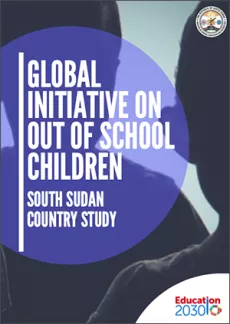South Sudan Country Study 2018
Country study on out-of-school children
Highlights
In the wake of persistent fragility and conflict, at least 2.2 million school-aged children are estimated to be out of school with thousands more at risk of dropping out. The number of out-of-school children (OOSC) in South Sudan has increased in recent years and this trend is projected to continue, reaching over 2.4 million in the next two years, if present circumstances are maintained.
Although the country has made efforts to increase access to education prior to the country’s conflict in 2013, barriers to education existed before the conflict including but not limited to extending access to remote areas, high levels of poverty, and socio-cultural dimensions, in which OOSC was a challenge before 2013. However, the challenges still exist in today’s landscape across geographies and education levels as well as new challenges brought about from the conflict.
In terms of some of the challenges, girls are more likely than boys to be excluded from education in South Sudan – in some parts of the country, over 75 per cent of primary-aged girls are not in school. Children in rural areas and those displaced by conflict are also amongst the most educationally-disadvantaged in the country, but nearly all South Sudanese children fit into at least one of the at-risk profiles, including children who are overage for their grade level, child labourers, children with disabilities, and street children, with a danger that the current schooling crisis will become the status quo.
This study analyses and uses available data to examine who and where these children are, unpacking the major barriers and bottlenecks that hinder school participation for so many children in South Sudan and mapping the existing policies and strategies that are in place to tackle these key issues. It culminates with a series of concrete, evidence-based recommendations for action aimed at enabling South Sudan’s large out-of-school population to enrol in – or return to – school.

